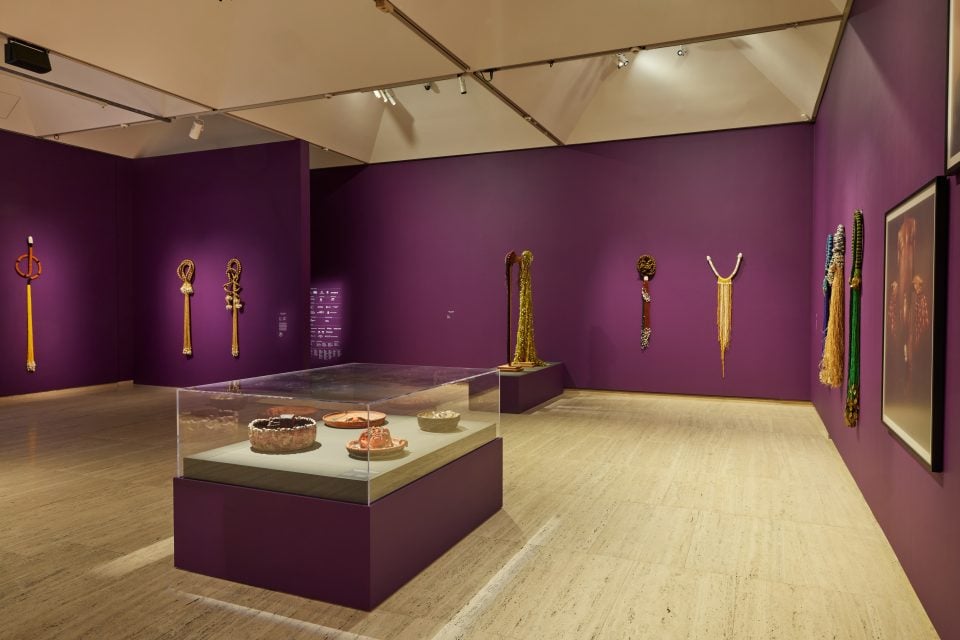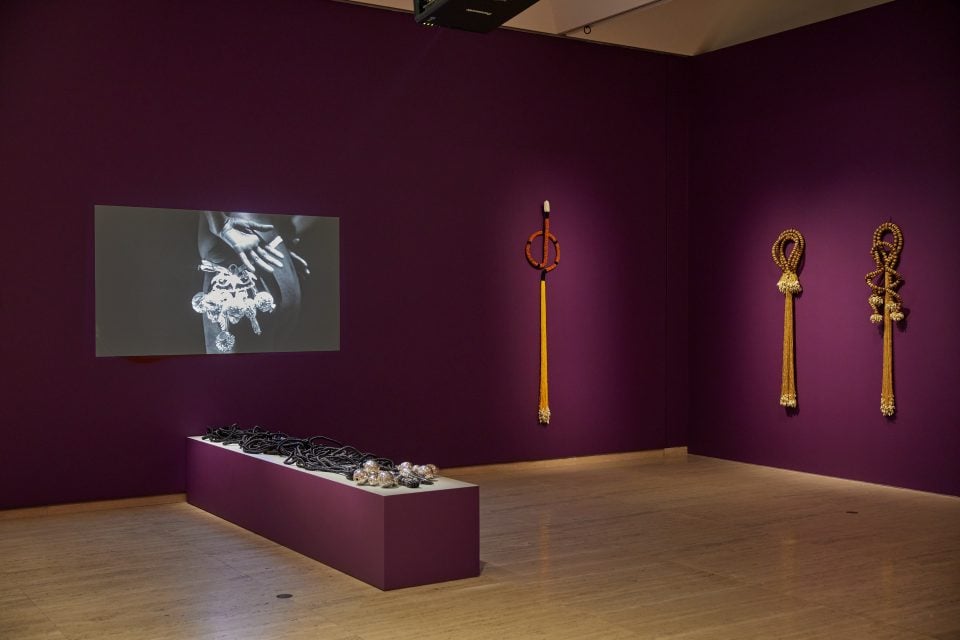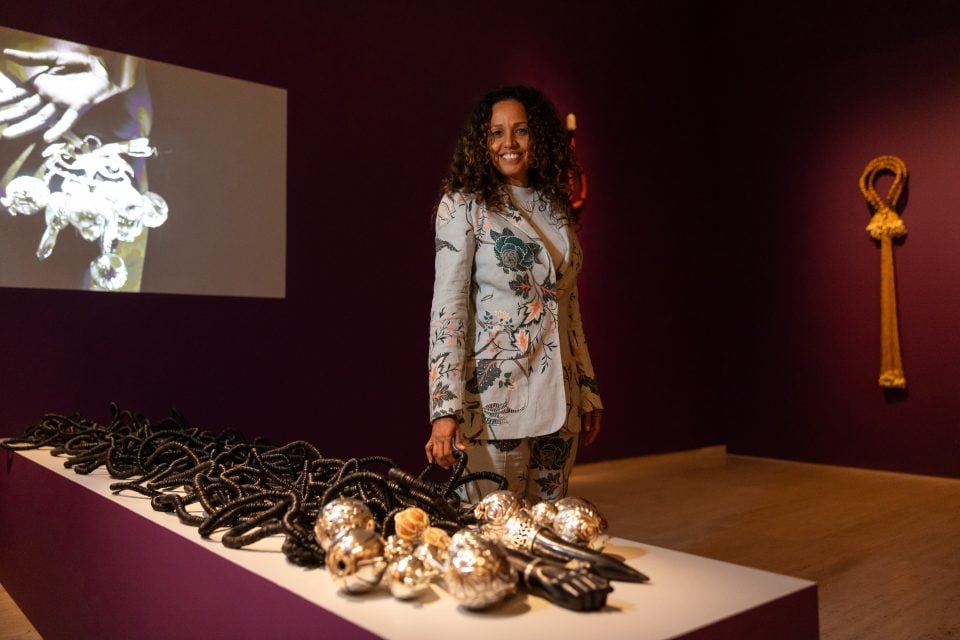Nádia Taquary
Born 1967 in Salvador, Brazil
Lives and works in Salvador
Art Gallery of New South Wales
Dinka Iroko 2019/2023
glass beads imported from Czech Republic, African cowrie shells, copper
Courtesy of Paulo Darzé Galeria
Dinka Yansã 2018
glass beads imported from Czech Republic, African cowrie shells
Private collection
Dinka Yemanjá 2017
glass beads imported from Czech Republic, African cowrie shells, silver, turquoise stone gravel
Courtesy of Paulo Darzé Galeria
Dinka Obaluaê 2018
glass beads imported from Czech Republic, African cowrie shells, gourds, coastal straw
Private collection, Abomei
Dinka Ossain 2018/2023
glass beads imported from Czech Republic, brass
Courtesy of Paulo Darzé Galeria
Abre Caminhos 2013
video, silver, ebonised coconut pastilles, copper
2:23 min
Courtesy the artist
Dinka Exu 2019
glass beads imported from Czech Republic, African cowrie shells, copper
Courtesy of Paulo Darzé Galeria
AG01 2022/2023
glass beads imported from Czech Republic, African cowrie shells, silver with gold plating, copper
Courtesy of Paulo Darzé Galeria
AG03 2022/2023
glass beads imported from Czech Republic, African cowrie shells, silver with gold plating, copper
Courtesy of Paulo Darzé Galeria
EG03 2021
Ipe wood, 70-degree bronze, fabric, African cowrie shells
Courtesy of Paulo Darzé Galeria
EG05 2021
Ipe wood, 70-degree bronze, glass beads imported from Czech Republic, Nigerian amber, gourds
Courtesy of Paulo Darzé Galeria
With her back turned to the camera, a Black woman sways gently in the dark, a set of ornaments at her hip rattling as she walks. She wears balangandãs – charms representative of the Afro-Brazilian cultural fusion that emerged in the aftermath of the transatlantic slave trade in Salvador de Bahia, the first capital of Brazil (1549–1763).
Worn by enslaved women and held together by a pencas de balangandã, a kind of hook or chain referencing the shape of a slave ship, each balangandã protected its wearer from misfortune through the symbolism of orishas, spirits in the Yoruba religion of West Africa and several communities of the African diaspora. Having travelled across the Atlantic, these spirits made a home in the Americas and, centuries after their arrival, would inspire the work of artist Nádia Taquary.
Taquary’s gilded sculptures adorned with bronze, gold and glass beads pay tribute to and celebrate the complex heritage of her Afro-Brazilian culture. In Dinka Yemanjá, with its vibrant blue glass beads and veiled in cowrie shells, Taquary depicts Yemanjá, a water deity who is the artist’s most closely held spiritual muse. Like the balangandã jewellery, Yemanjá, as the guardian of women and the patron of oceans and rivers, can hold the pain and poetry of her migration with the same grace as those whom she protects.
Born in Salvador in 1967 and raised in Valença, Bahia, Brazil, Nádia Taquary’s artistic endeavours delve into the exploration of Afro-Brazilian sacred traditions and practices, emphasising the remarkable presence of black female protagonism in Brazil and their ancestral heritage. Her work serves to challenge and dismantle the eugenic, Eurocentric, and patriarchal narratives that have historically obstructed access to crucial knowledge and understanding of this rich pre-colonial African legacy.
Read more about the 24th Biennale of Sydney, Ten Thousand Suns, by purchasing the catalogue here.



